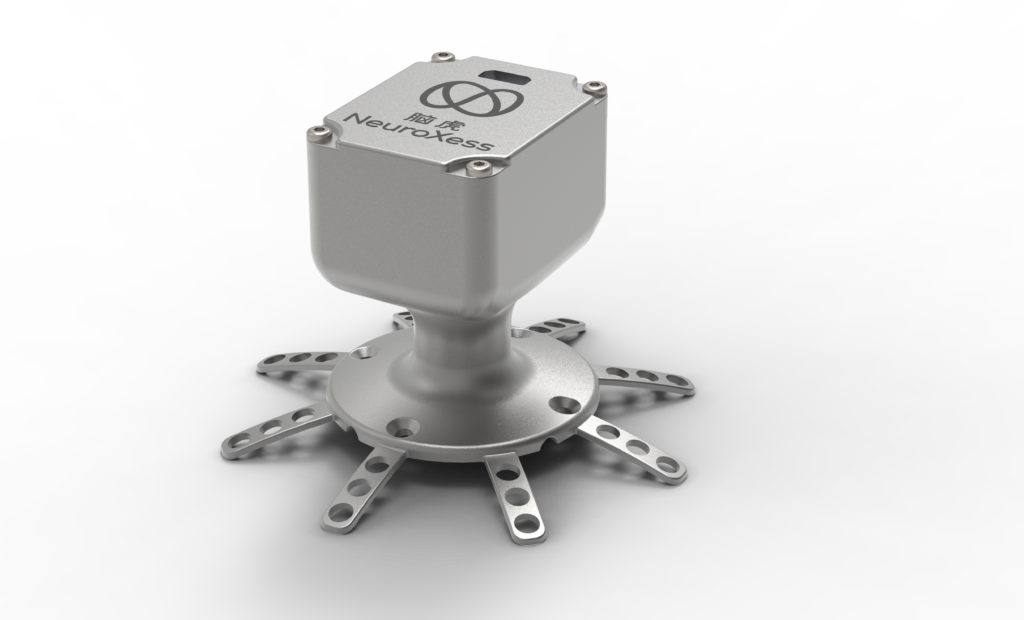BCI technology made its debut at the 2022 World Artificial Intelligence Conference (WAIC) and became the highlight. Recently, it pushed the enthusiasm of capital and entrepreneurs to a climax again. In September 2022, Shanghai Municipal People’s Government set up a strategy to develop five future strategic industries. The strategy pointed out that by 2030, a number of major breakthroughs, innovative enterprises, and leading talents with world influence will emerge in industries of the future such as health and healing, artificial intelligence, energy, space, and materials. Brain-computer interface (BCI), the top 1 trending technology in the future health and healing field, has garnered significant interest.

The brain-computer interface (BCI) refers to the creation of a direct connection between the human brain and an external device. It plays a big role in the treatment of neurological diseases such as paraplegia, stroke, Parkinson’s disease, and ALS. BCI is not only the key technology to unveil the unknowns of the human brain and analyze it, but also a significant tool for the most cutting-edge research in international brain science.
In BCI technology, there is no apparent gap between domestic and overseas players. Phoenix Peng, Co-founder and Chief Scientist of NeuroXess (a leading Shanghai-based life science company focusing on flexible electrode BCI technologies), confidently said that NeuroXess will not lose to its foreign counterparts in terms of technology. The company develops minimally invasive, high-throughput, flexible BCI technology independently, offering considerable advantages in various fields worldwide, such as materials and neural signals acquisition. In addition, China’s adequate clinical medical resources and governmental priority placed on AI and related sectors also boost the rapid growth of China’s BCI technology.
BCI technology is the fundamental instrument of brain science that scientists must employ to explore cutting-edge knowledge. The continuous and tremendous progress made in the development of artificial intelligence, neurobiology, technology, and policy is bound to spark a new round of technological revolution, and the commercialization of BCI will be implemented sooner or later. BCI technology reached the inflection point in 2021, according to Phoenix Peng. This year, major breakthroughs made in the application of BCI received extensive attention worldwide.
At the 2022 World Artificial Intelligence Conference (WAIC) held in September, NeuroXess released its first integrated cranial parietal semi-implantable medical-grade BCI product, three electrodes, a high-frequency EEG signal processor, bundled with a software and algorithm cloud platform. Phoenix Peng said that NeuroXess will pursue the national policy, with the goal of creating value for the scientific research market and medical market.
The company’s newly-released semi-implantable medical-grade BCI products have three advantages. First, cortical electrodes and flexible deep electrodes featuring MEMS micro- and nano-technology are adopted. They have three features: high-channel capability (deep electrode 2640 channels, cortical electrode 1024 channels); high-density capability (deep electrode 2500 channels/cm2, cortical electrode 150 channels/cm2); high-flexibility capability (deep electrode thickness 2μm, cortical electrode thickness 10μm).
Second, NeuroXess has developed a minimally invasive implant to insert a flexible electrode. Silk protein as the wrapping material to assist the implantation of the electrodes is also used in an attempt to reduce the trauma and damage to the brain since the material itself is more easily degradable and is a safer implantation aid.
Third, NeuroXess independently develops EEG signal-processing chips and builds a digital brain bank through the information stored in the cloud. The massive digital brain bank can be used for analysis and deliver highly robust solutions that can help medical and scientific institutions meet the needs of different scenarios.
According to Phoenix Peng, NeuroXess had provided parts and products such as electrodes, software, and chips to research institutions, universities, hospitals, and other customers before WAIC. There are two main commercial uses of the BCI devices that were released at WAIC. In the first five years, they will serve as a basic research tool for scientific workers to support China’s brain-related projects. In the second five years, the BCI devices will break into the market when they are generally accepted and have long-term stability, creating medical value by treating neurological diseases such as ALS, high paraplegia, and visual impairment.
发表回复